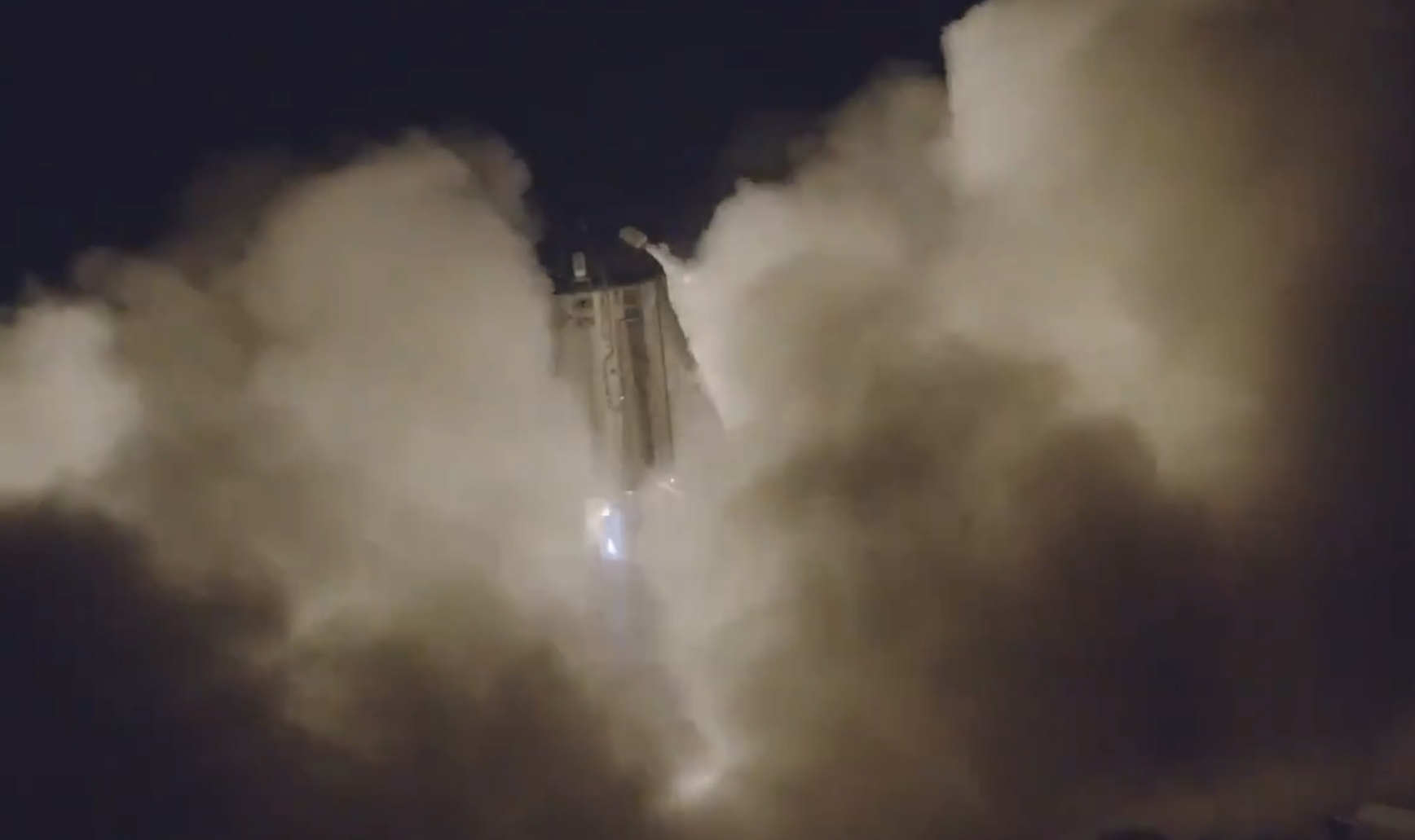Score one for SpaceX! Last night (Thursday, July 25th), after multiple delays that were causing no shortage of stress and concern, Elon Musk’s aerospace company succeeded in conducting their first untethered test with the Starhopper. This test once again validated the engine that will power the full-scale and fully-reusable Starship and its Super Heavy launch system that will fulfill Musk’s promise of sending people to the Moon and to Mars.
This success comes after multiple technical issues forced delays of the first
This test would see the vehicle “hop” to a height of 20 meters (~65 feet) and then make a powered descent and landing. This is similar to the tests SpaceX conducted with the prototype for the Falcon 9 rocket (the Grasshopper test vehicle). With each successful test, the engine and the test vehicle would ascend to higher altitudes to demonstrate its retrievability.
That’s when the technical problems began. On July 16th, at the company’s South Texas Launch Site in Boca Chica, Texas, a fire broke out while the crews were test firing the prototype Raptor engine. About four minutes later, a second small explosion engulfed the Starhopper in flames. Luckily, no one was hurt and the vehicle and engine emerged unscathed.
On Wednesday, July 24th, the ground teams made their first attempt at an untethered test but were forced to abort the test when a fire that began shortly after engine ignition. This fire was similar to what occurred during the static fire test during the previous week. The teams hoped to make a second attempt that evening, but another technical issue forced them to scrub that as well.
However, last night, the ground teams made yet another attempt, and this time was met with success. The test began a few seconds before 10:45 pm PDT (01:45 am EDT) when the Raptor engine was ignited. Initially, this created a massive cloud of smoke, dust, and fire through which the Starhopper was barely discernible. But about 20 seconds after the smoke cleared, the Starhopper was visible again in a different spot on the pad.
According to rough measurements released by SpaceX, the Starhopper reached a maximum height of about ~15 to 20 meters (~50 to 65 feet). The engine also appears to have functioned well-within established parameters, though the ground teams are likely to be pouring over the data for days and weeks to come to see if there were any technical issues.
Musk tweeted success via his official account on Twitter, saying “Starhopper flight successful. Water towers *can* fly haha!!” (a reference to the vehicles nickname). He also shared video footage of the test from the camera mounted on the underside of the Starhopper to monitor its engine, as well as the footage obtained by an aerial drone.
As you can see from both, the Starhopper not only ascended during the test and also diverted laterally thanks to a little vectoring with the engine nozzle. Whereas the engine cam shows the flames momentarily disengaging from the ground, the drone cam distinctly shows the vehicle ascending before it is obscured by the rising smoke and flame.
Ironically enough, the only fires started by the Raptor engine this time were caused to the Starhopper’s pad. In fact, the damage caused to the pad was extensive and spread to the adjacent area, causing a brush fire that extended for a few hundred feet. The only thing that appeared completely untouched by fire after the test was the Starhopper itself.
The successful completion of this hop and divert test is another major milestone for the company and brings it one step closer to the creation of the full-scale Starship and Super Heavy. According to a subsequent tweet by Musk, the company could be ready to take the next step – a 200 meter (650 foot) hop – in a week or two.
He also indicated that SpaceX would be presenting an update on their progress after that hop is completed. Needless to say, there is still a long road ahead and many hurdles to clear. But if all goes well, Musk could be fulfilling his promise of conducting lunar missions early in the next decade, and maybe even missions to Mars and the creation of a Mars colony by the end of it.
Further Reading: Teslarati

